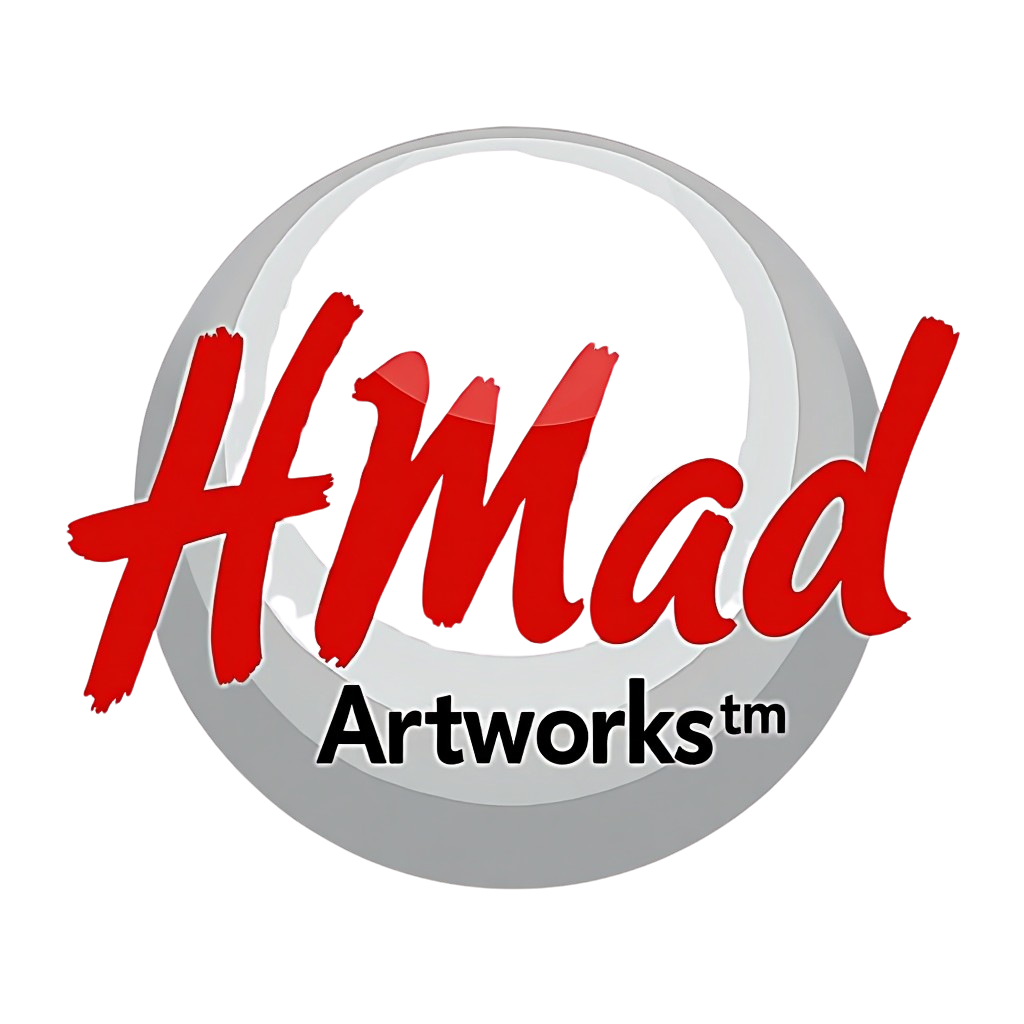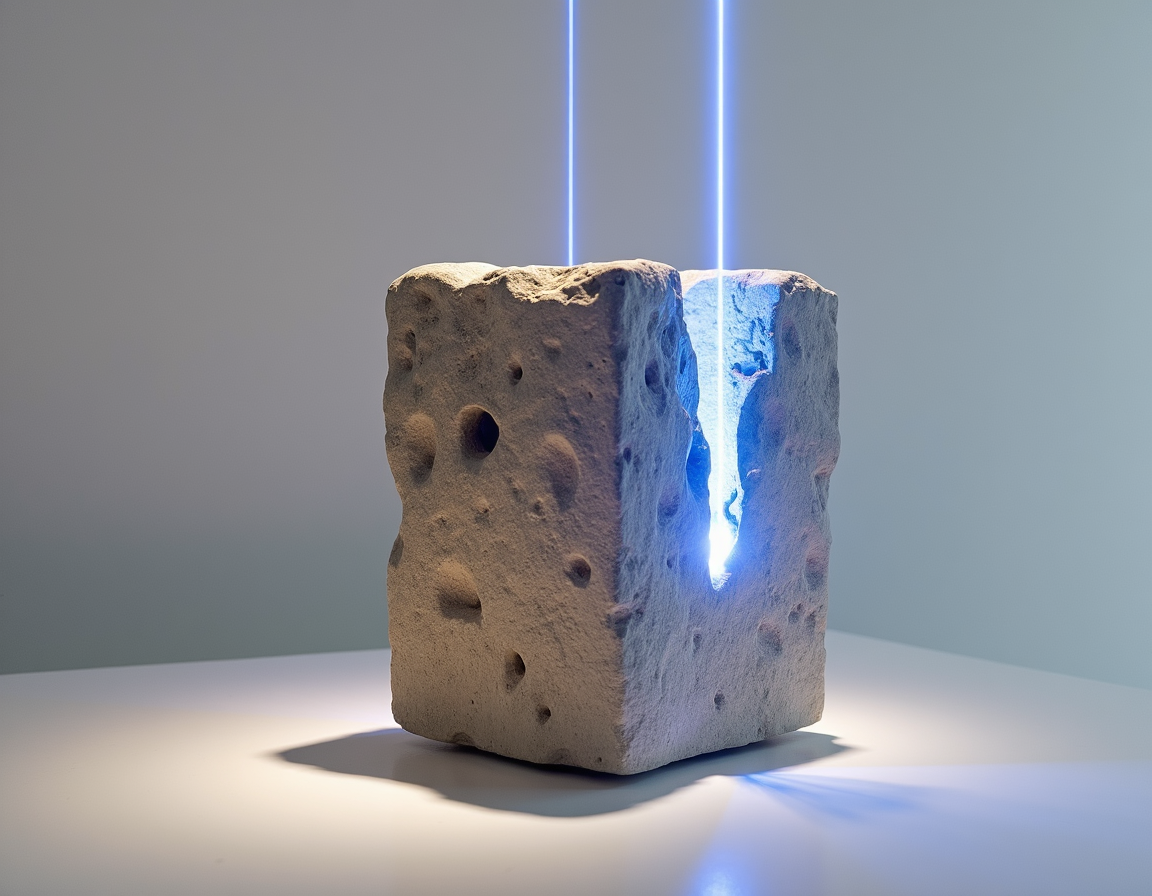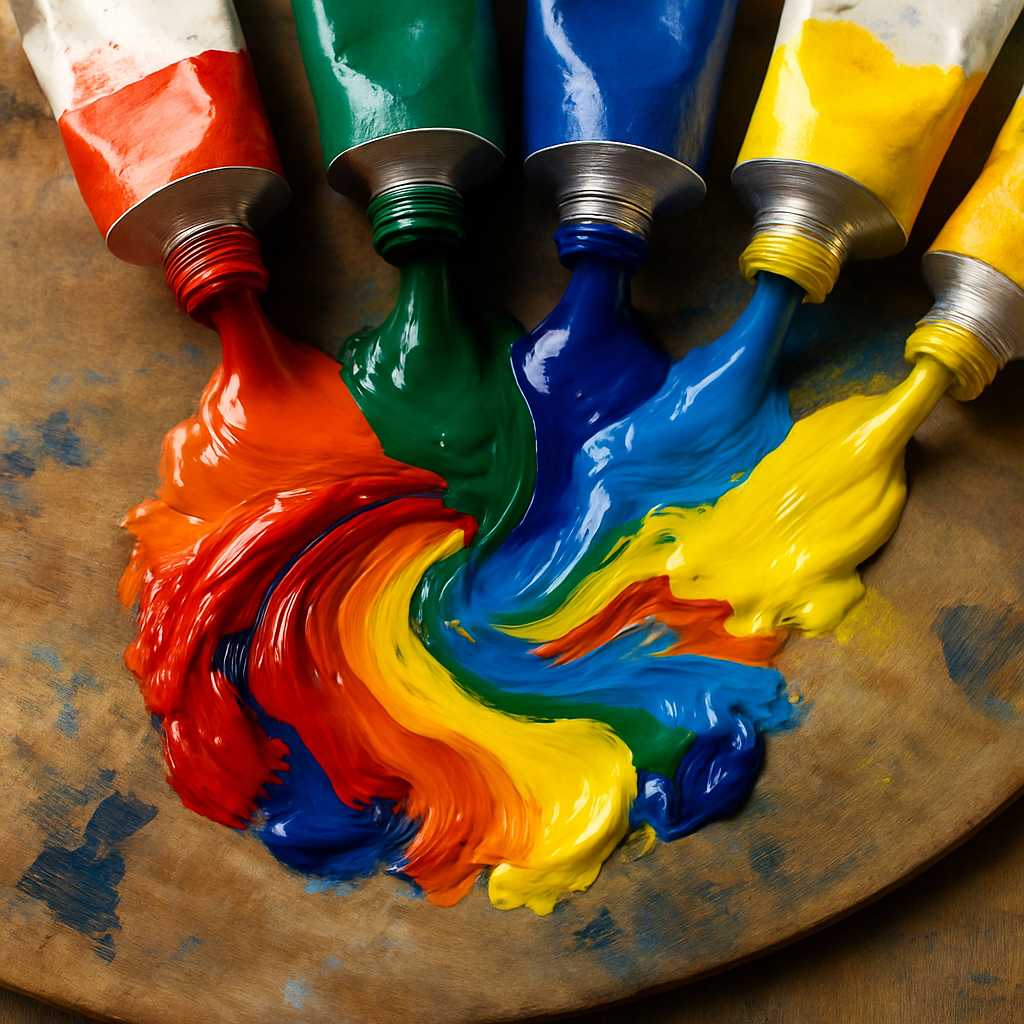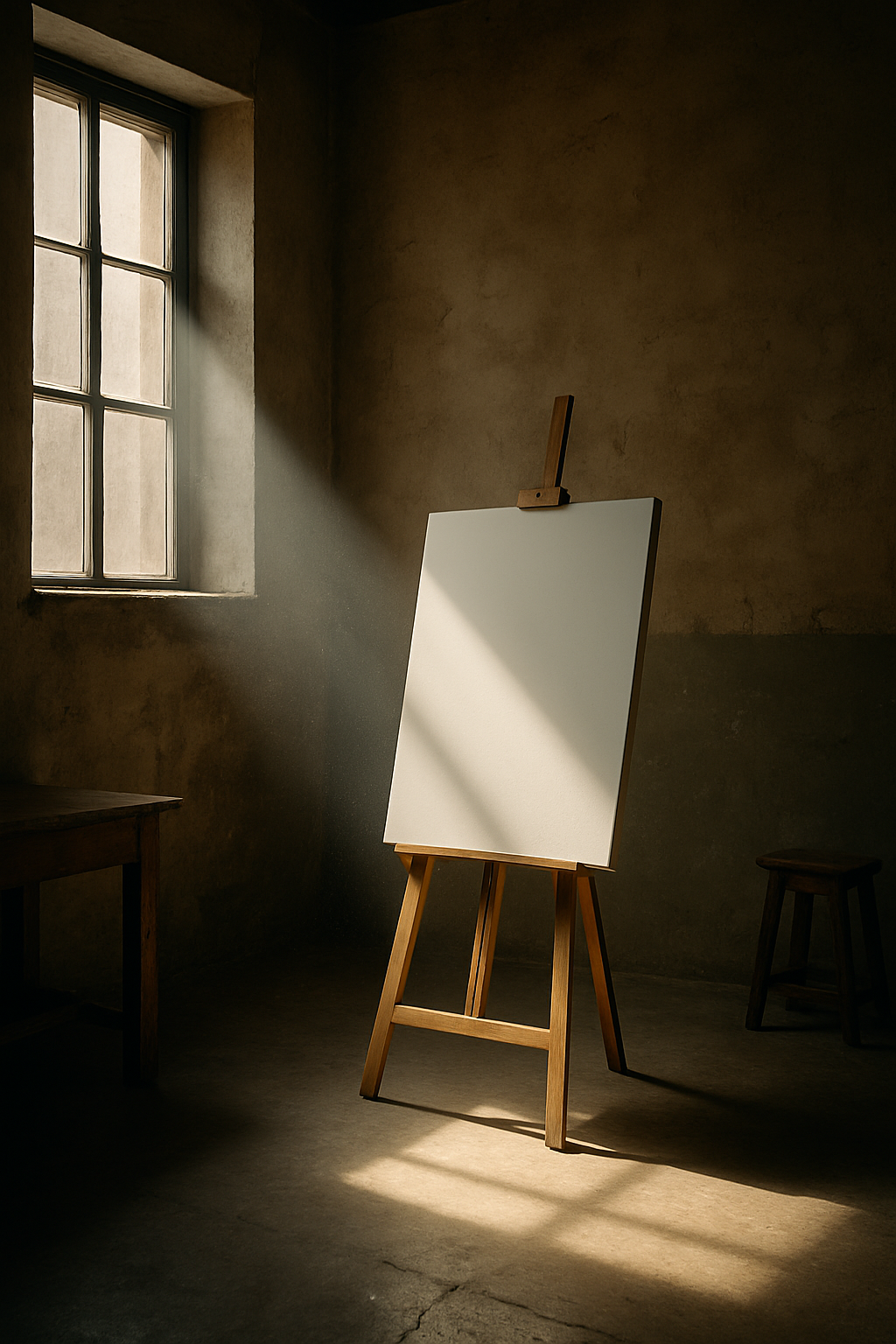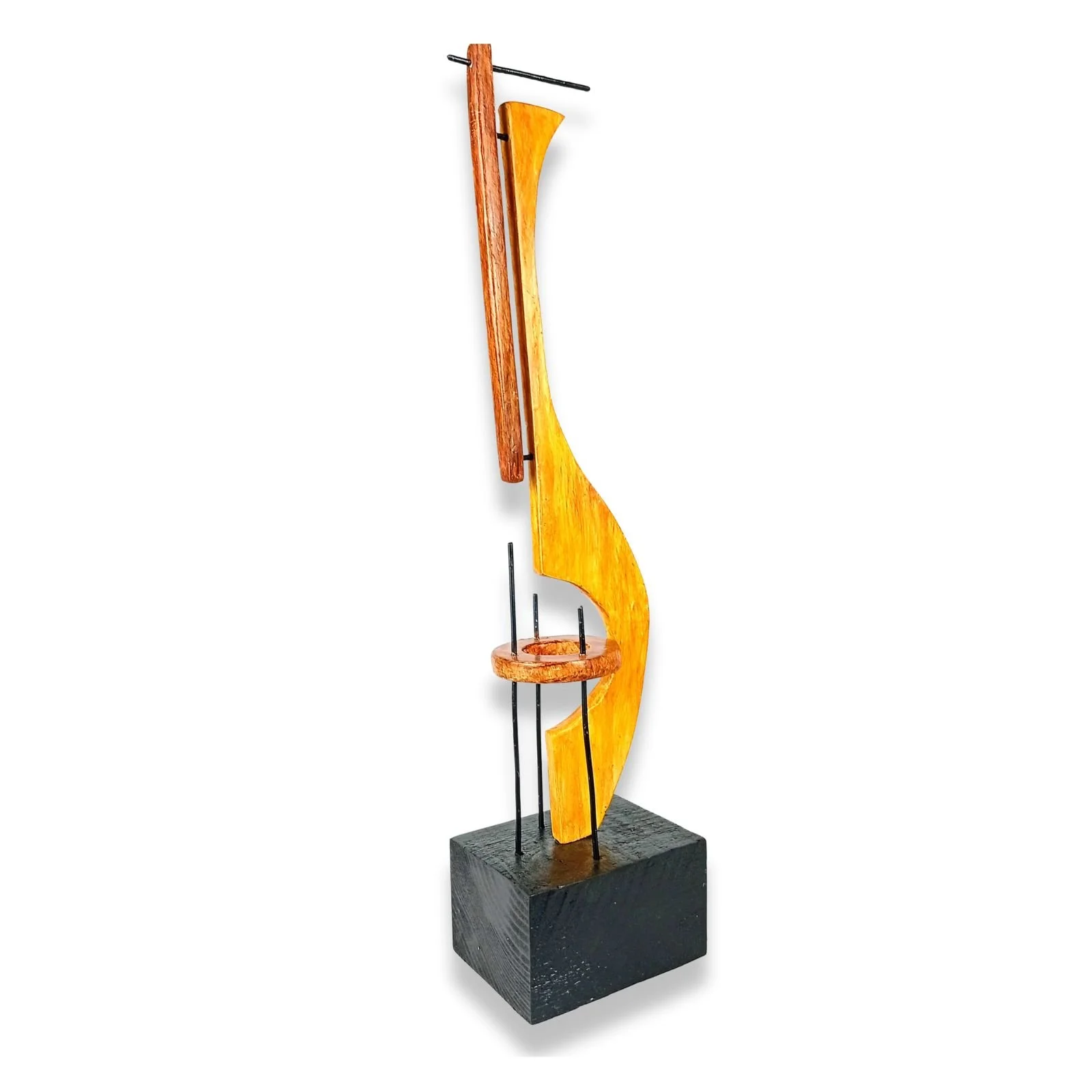The Evolution of Sculpture: From Ancestral Clay to Contemporary Installations
From the will to sculpt a god in marble to the desire to create a question in space, sculpture has evolved, but its central impulse remains intact.
"Sculpture is the art of the intelligence."
— Pablo Picasso
Think of the first sculptor. Not an artist, but a human who picked up a handful of clay and, driven by an impulse they didn't even understand, left the mark of a finger on it. That small indentation, made with no apparent utility, was the first revolution.
Sculpture was born from that tactile relationship with the world. From clay to stone, then to bronze. It was the urge to make the ephemeral permanent, to give form to the invisible. Gods, kings, heroes. The material was heavy, the work was physical, eternity was the goal.
And then? The mission changed.
The Great Shift: From Representing to Questioning
Classical sculpture wanted to answer. Contemporary sculpture prefers to ask.
It's no longer just about mastering material to create a beautiful or powerful form. It's about challenging the very idea of what a sculpture is. Can it be an installation made of light and shadow? Can it be a found object from the street? Can it be an immersive experience that only exists while you, the viewer, are inside it?
Marble gave way to plastic, glass, digital data. The tool is no longer just the chisel, but code, the sensor, the concept.
The Invisible Thread
It seems like a total break, doesn't it? From the clay idol to the data cloud.
But look again. The common thread is there. It's that very same impulse from the first human with the clay: the desire to touch the world and leave a mark. Be it a groove in the clay, a fold in corten steel, or a point of light in an empty space.
Sculpture remains the art of space, volume, and presence. It's just that now, instead of showing us a god, it invites us to think about what a god is. Instead of imposing a narrative on us, it offers us a space to imagine our own.
It's less about monuments. And more about moments. Less about eternity. And more about the now.
👉 Bottom line: Sculpture no longer asks "what do I represent?", but rather "what do I provoke in you?". And that is its greatest evolution.
5 contemporary artists who reinvented the use of color
Five contemporary artists who turned color into language, experience, and attitude.
Paint tubes in a chromatic revolt.
“Color is the place where our brain and the universe meet.” — Paul Klee
People always bring up Van Gogh, Matisse, and Rothko when talking about color. But what about today’s artists? They’re not living in the shadows — they reinvent color as language, experience, even provocation. Here are five names worth dropping at your next artsy dinner.
Olafur Eliasson
He doesn’t paint, but he paints with light. His installations turn rooms into artificial sunsets and fogs of color. For him, color isn’t pigment: it’s atmosphere.
Anish Kapoor
If you’ve seen that black that swallows your gaze (the infamous Vantablack, and all the drama around it), you know what I mean. Kapoor doesn’t use color as decoration, but as pure power.
Yayoi Kusama
Polka dots, mirrored infinities, and rooms straight out of a pop delirium. Kusama turned color into repetitive obsession — and in that, found freedom.
Sean Scully
Looks like “just” geometry, but it’s poetry in blocks. His stripes breathe, vibrate, almost move. His abstraction is warm, not clinical.
Cecily Brown
She paints like diving into chaos. Colors explode, blur, and collide in furious gestures. Painting that doesn’t ask for permission to enter.
👉 Bottom line, with paint still wet: color has never been just aesthetics — it’s attitude. These five prove it can still be reinvented with every generation.
The creative drama: wood dust and stubborn faces
Between dust, tools, and stubbornness, matter always reminds the artist who’s in charge.
Between dust, tools, and stubbornness.
Sometimes the studio feels like a courtroom: I argue, the wood objects. I imagine fluidity, it insists on throwing back edges.
The result is here — among dust, tools, and a stern face that came out of the block almost out of stubbornness.
👉 The artsy moral of the tale: the artist never beats matter — he just negotiates temporary truces.
Before the first brushstroke
Painting doesn’t start on the canvas, but in the silence that prepares the space for it to happen.
Silence before creation.
“It is not the painter who chooses the painting, it is the painting that chooses the painter.” — Georges Braque
Most people think a painting starts the moment color hits canvas. As if it were instant magic: paint → canvas → artwork.
For me, it starts much earlier. In silence. In emptiness. In that invisible space where the work decides whether it wants to be born.
What comes first
Every series demands its own logic. I’ve seen canvases turn into fragments of memory, into bodies moving, into landscapes to explore. I never repeat the path. Each exhibition forces me to unlearn and invent a new way of thinking.
That’s the risk: walking into a forest I’ve never crossed, with no map, no promise of a way out. And yet — stubbornly hoping there will be light.
Order and chaos at the table
I can sketch plans, fill notebooks with ideas, rehearse in my head. But when the moment comes: color chooses its destiny, gesture takes over, the painting responds. And me? I follow.
It’s in that tense balance between order and chaos that the work reveals itself — and often surprises me more than it surprises you.
The real secret
Maybe the secret is not mastering painting. Maybe it’s just this: preparing the space so that it can happen. Like clearing a path and waiting for the light to break through.
👉 Café conclusion: painting doesn’t begin on canvas, but in the space we open for it to exist. And in December, I’ll be opening that space with you.
Why do we still talk about Van Gogh?
Van Gogh still speaks to us because his painting screams urgency, pain, and beauty — everything art needs.
Vincent van Gogh, “Two Cut Sunflowers” (1887). The Phillips Collection, Washington, Image in public domain by Wikimedia Commons.
“I dream my painting, and then I paint my dream.” — Vincent van Gogh
We talk about Van Gogh as if he were an old friend. And in a way, he is. You know the straw hat, the sunflowers, the ear, the letters to Theo. Even if you’ve never set foot in a museum, you’ve met him.
But why this collective obsession?
Tragedy sells (big time)
Van Gogh is the original rockstar painter: poor, misunderstood, suicidal. He lived in misery, died young, and sold almost nothing in his lifetime. The rest you know — the market and the critics turned him into legend. Culture loves martyrs.
Color that screams
Look at one of his canvases and tell me you don’t hear sound. The yellow of the sunflowers spits light. The starry sky isn’t sky, it’s music in oil. There’s an intensity that cuts across time, almost untranslatable.
The myth of authenticity
In an age of Instagram filters and polished LinkedIn bios, Van Gogh works as a counterpoint. The “mad genius” who didn’t fake it. Who burned from the inside and threw the ashes onto canvas. Truth or romantic construction? Doesn’t matter. It works.
And you?
We still talk about Van Gogh because we need someone to remind us that art isn’t just market, technique, or “good taste.” It’s excess, it’s pain, it’s beauty that disturbs.
👉 Bottom line, with paint still wet: Van Gogh reminds us that for art to be art, it must be urgent.
Fresh fragments: early clues of the next exhibition
A fragment straight from the studio: colour, texture and the first clues of December’s exhibition.
“I paint as I breathe.” — Pablo Picasso
Introduction
Friday calls for revelations. Not all of them, of course — any artist worth their salt knows suspense is also raw material. So here it is: the first bite of what’s to come in the next exhibition.
A detail that tells a story
In the photo you see the hand, the fresh paint, the knife carving the canvas. It’s not a pose, it’s process. And if it shows only a corner, it’s because the full work can’t leave the studio yet. Secrets paint too.
The first canvases
They’re growing in thick, almost sculptural layers. Greens that feel like jungle, oranges that wink like fire. Texture begging you to touch it (no, you can’t). It’s the physical side of painting — gesture, body, sweat — that you sometimes forget when all you see is a tidy canvas on a wall.
Why show it now?
Because the exhibition is already breathing, and you deserve a taste. It’s like lifting the lid before the stew is ready: you know it still needs time, but you can’t resist peeking.
Closing
👉 The artsy moral of the tale: this is just the first fragment. Until December, the blog will keep dropping fresh clues.
How to choose between canvas and paper: a simple guide not to get lost in the art shop
A quick, witty, and direct guide to avoid getting lost between canvases and papers at the art shop.
“Art does not reproduce what we see. It makes us see.” — Paul Klee
You walk into the art store. The plan was simple: grab “something to paint on.” Half an hour later you’re still frozen between canvases, smooth papers, textured papers, thick, thin, cheap, pricey… and already considering pretending you forgot your wallet.
Canvas or paper? That is the question
The dilemma is old. Canvas has prestige, instantly screams “serious art.” Paper is democratic, versatile, slips into any folder. Both have their charm — but it helps to know what each is good for.
When to choose canvas
You want your piece to last for decades without yellowing.
You’re working with oil or acrylic (paper suffers with that).
You love the irregular texture that gives depth to color.
You want to hang the work directly, no frame needed.
You need to feel like a “studio painter,” even if just on Sundays.
When to choose paper
You like experimenting with watercolor, gouache, graphite, or pastels.
You enjoy the freedom to tear, glue, fold.
You don’t have room to store canvases (paper stacks).
You want something cheaper for tests or quick series.
You know Picasso sketched on paper too — and it worked out fine for him.
Survival tip in the art store
If you still freeze in the weight-and-texture aisle: buy both. Worst case, you’ll discover you’re a mixed-media artist without even trying.
Closing
👉 The artsy moral of the tale: canvas impresses, paper frees. It’s like choosing between wine and coffee — each has its moment.
Hidden stories behind famous paintings
Behind every masterpiece lie secrets, thefts, and chaotic lives. Discover the hidden stories of the Mona Lisa, The Scream, and The Starry Night.
Eternal paintings, stories not always visible on the surface.
“Every painting has three stories: the one the artist painted, the one the critic invented, and the one you see.” — Anonymous
Famous paintings seem familiar — you see the image, you recognize it instantly. But behind the surface lie secrets, accidents, and even scandals that don’t usually fit in museum captions.
👉 The Mona Lisa that almost vanished
Before it was the most famous painting in the world, the Mona Lisa was… stolen. In 1911, a Louvre employee tucked it under his coat and took it home. It was missing for two years. Ironically, that “theft of the century” is what turned it into a global icon.
👉 Munch’s Scream that lived through chaos
Edvard Munch described his work as “a scream of nature.” But few know he painted several versions — and one was stolen at gunpoint in Oslo. When it was finally recovered years later, it was damaged. Even the painting itself seems to have lived the despair it depicts.
👉 Van Gogh and the solitary star
“The Starry Night” is now a symbol of poetic hope. But Van Gogh painted it while confined in an asylum, staring at the sky through barred windows. The image that calms us today was born in one of the stormiest moments of his life.
👉 Hidden stories = living art
These backstage stories don’t diminish the works. On the contrary: they make them more human. They remind us that even the “eternal” masterpieces are made of flaws, accidents, and chaotic lives.
👉 The artsy moral of the tale
Behind every famous painting there’s always a hidden story — and that’s what makes them inexhaustible.
Minimalist sculpture: simple or deceptive?
Minimalist sculpture may look simple, but it hides radical choices and an almost obsessive focus on the essential.
Refined lines, silence in wood and iron.
Refined lines, silence in wood and iron.
“Less is more.” — Ludwig Mies van der Rohe
Minimalist sculpture may seem, at first glance, simple. Clean lines, stripped forms, no unnecessary decoration. But is it really that straightforward?
👉 The illusion of simplicity
A casual glance might think: “Anyone could do this.” Yet the hard part is reaching the essential without falling into monotony. Cutting, reducing, refining… until only what truly matters remains.
👉 The dialogue between void and form
In sculpture, empty space isn’t absence — it’s part of the work. The void shapes the volume, creates tension, and suggests presences that are not there but can almost be felt.
👉 Why deceptive?
Because behind every “simple” line lies a set of radical choices: what stays and what disappears. Formal economy demands an almost obsessive attention.
👉 Want to see how minimalism takes shape?
Browse the In the gallery to discover the full collection.
And if you’d like to explore the pieces (still) available for purchase, visit the Minimal Abstract Figurativism page
👉 The café conclusion
Minimalism isn’t laziness. It’s risk, precision, and trust in letting the essential speak for itself.
5 things you should never say to an artist
Five seemingly innocent phrases that can make an artist want to throw the brush out the window.
“An artist is someone who sells what he no longer has.” — Picasso (with his trademark irony)
We all know that friend who thinks they’re being nice… but says the worst possible thing.
To avoid deadly stares and awkward silence, here are 5 gems you should never say to an artist:
“Can you actually make a living from this?”
(Thanks for the concern… now excuse me while I eat my canvas with acrylic sauce.)“But how long did it take you?”
(As if the value was in the stopwatch and not the creation. Spoiler: this isn’t Uber Eats.)“My kid could do that too.”
(Congrats to your kid. Maybe they’re a genius. Or maybe you just don’t get it.)“Can you give me a discount?”
(Sure, and you happily take half your paycheck, right?)“I could do that myself.”
(Then… why didn’t you?)
👉 The no-fluff takeaway
Respect the artist, enjoy the work — and if you can’t think of anything smart to say, just compliment the color.
Picasso: genius or master illusionist?
Picasso: undeniable genius or master illusionist? Between the revolutionary artist and the salesman of his own myth, the truth might be somewhere in between.
Pablo Picasso, 1950s. Photograph by André Villers.
“It took me four years to paint like Raphael, but a lifetime to paint like a child.” — Pablo Picasso
Was Picasso a genius or simply a brilliant illusionist?
The question stings, because it shakes the pedestal we’ve placed him on.
On one side, the undeniable genius:
He reinvented himself through multiple styles, from the Blue Period to Cubism.
He broke conventions and opened the doors to what we now call contemporary art.
He created iconic works that even people who dislike art still recognize.
On the other, the master illusionist:
He knew how to provoke, shock and grab attention like few others.
He sold himself (and us) the idea that any line he drew was art.
He turned his persona into a spectacle — and that also has a price.
Gertrude Stein, who knew him in Paris, once said:
“He is Spanish, you know… and for a Spaniard, the world is a stage.”
And the critic Robert Hughes put it bluntly:
“Picasso was as much a salesman as a painter. But maybe that was the secret of his greatness.”
👉 What remains is this delicious ambiguity: Picasso was both artist and performer, painter and salesman, genius and illusionist. Maybe that’s what makes him eternal — you simply can’t put him in a single box.
And you? When you look at a Picasso, do you see genius, trickery, or both at once?
👉 The artsy moral of the tale
Picasso may have sold illusions, but maybe that’s his greatest talent: convincing us that art is more than paint on canvas — it’s also the story we choose to believe.
What is art, really?
What is art, really?
It’s not just galleries and white walls.
Sometimes it’s a doodle on a napkin, the silence between two notes… or simply paint-stained hands and hot coffee by your side.
Paint and coffee — the official fuels of creative madness.
“Art is what makes your heart beat faster. Or slower. But never indifferent.” — Anonymous
Art isn’t just museums and white walls.
Art can be the doodle on a napkin, the blurry photo that ends up having more soul than the “perfect” one, or even the silence between two guitar notes.
It’s personal, but also universal.
It’s serious, but it can also be brilliant nonsense.
It’s hard work, but also a stroke of luck.
👉 The trick? It doesn’t need a single definition. What it needs is space for you to breathe and feel.
👉 Bottom line, with paint still wet
Art is anything that makes you stop for a second and think: “Hold on… that moved me.”
